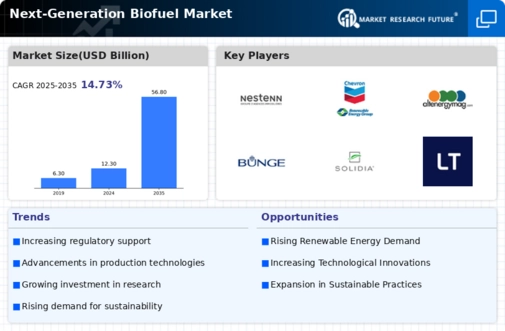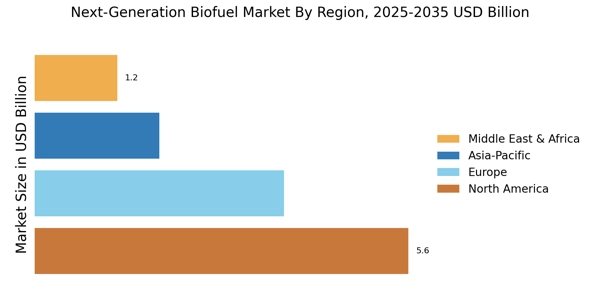Rising Environmental Concerns
The Next-Generation Biofuel Market is increasingly driven by rising environmental concerns among consumers and policymakers alike. The adverse effects of fossil fuel consumption, such as greenhouse gas emissions and air pollution, have prompted a shift towards cleaner energy alternatives. Biofuels, particularly those derived from waste materials and non-food crops, are perceived as more sustainable options. According to recent studies, biofuels can reduce lifecycle greenhouse gas emissions by up to 80% compared to conventional fossil fuels. This growing awareness is leading to increased demand for biofuels, as consumers seek to minimize their carbon footprint. Consequently, the market is expected to expand as more stakeholders recognize the environmental benefits associated with Next-Generation Biofuels.
Shifts in Energy Demand Patterns
Shifts in energy demand patterns are reshaping the landscape of the Next-Generation Biofuel Market. As economies evolve and urbanization accelerates, there is a notable increase in energy consumption, particularly in transportation and industrial sectors. This shift is prompting a reevaluation of energy sources, with biofuels emerging as a viable alternative to traditional fossil fuels. The International Renewable Energy Agency has indicated that biofuels could account for up to 10% of total transportation fuel by 2030. This trend is further supported by the growing adoption of biofuel blends in various regions, driven by both consumer preferences and regulatory mandates. As energy demand continues to shift, the Next-Generation Biofuel Market is poised for substantial growth.
Regulatory Incentives and Support
The Next-Generation Biofuel Market is significantly influenced by regulatory incentives and supportive policy frameworks established by various governments. These policies often include tax credits, subsidies, and mandates that encourage the adoption of biofuels. For example, several countries have implemented renewable fuel standards that require a certain percentage of biofuels in transportation fuels. Such regulations not only promote the use of biofuels but also create a favorable environment for investment in biofuel technologies. The International Energy Agency has indicated that these supportive measures could lead to a doubling of biofuel production capacity by 2030, thereby enhancing the market's growth prospects. As regulatory frameworks evolve, they are likely to further stimulate innovation and investment in the Next-Generation Biofuel Market.
Investment in Research and Development
Investment in research and development is a crucial driver for the Next-Generation Biofuel Market. As the demand for sustainable energy solutions escalates, both public and private sectors are allocating substantial resources to advance biofuel technologies. This investment is aimed at improving production processes, enhancing feedstock varieties, and developing new biofuel applications. For instance, funding for research initiatives focused on algae-based biofuels has increased, given their potential for high yield and low environmental impact. The U.S. Department of Energy has reported that R&D investments could lead to breakthroughs that significantly lower production costs and improve the overall viability of biofuels. As these advancements materialize, they are likely to catalyze further growth in the Next-Generation Biofuel Market.
Technological Innovations in Biofuel Production
The Next-Generation Biofuel Market is experiencing a surge in technological innovations that enhance the efficiency and sustainability of biofuel production. Advanced methods such as synthetic biology and genetic engineering are being employed to optimize feedstock conversion processes. For instance, the development of engineered microorganisms capable of converting non-food biomass into biofuels is gaining traction. This innovation not only reduces competition with food crops but also expands the range of available feedstocks. Furthermore, the integration of artificial intelligence in production processes is streamlining operations, thereby reducing costs and increasing yield. As a result, the market is projected to grow at a compound annual growth rate of approximately 15% over the next five years, driven by these technological advancements.


















Leave a Comment